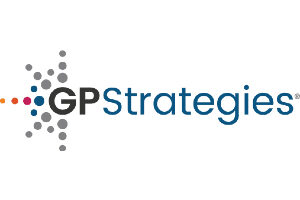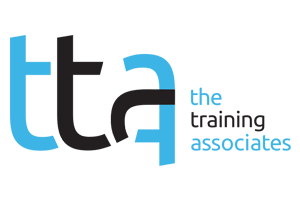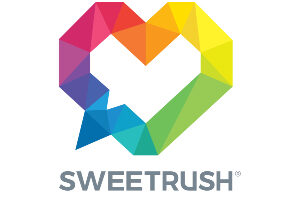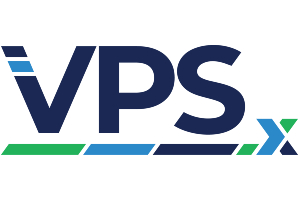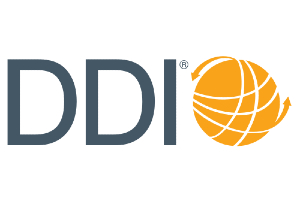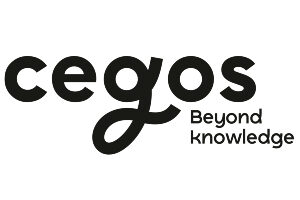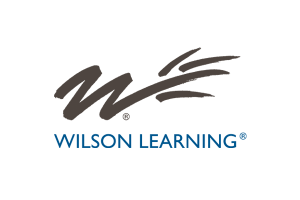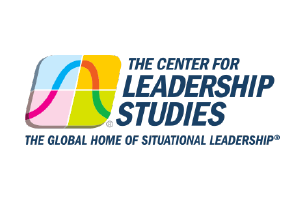Coaching is an important part of staff development, and the increased focus within learning and development on coaching earned it a place in the Training Industry annual trends report in 2017.
If anything, since then, coaching has become even more of a frequent topic within L&D. While many training professionals are familiar with coaching as a modality used in high-potential or similar leadership training, coaching can help people develop skills and accomplish professional goals at any level or in any role.
Many companies bring in external coaching consultants, but internal coaching programs are a great way to introduce coaching to an organization’s culture and to support the practice within a company. In this episode of “The Business of Learning,” Matt Becker, M.Ed., MCC, coaching and mentoring manager at CareSource, shares:
- The benefits of internal coaching.
- Who can benefit from internal coaching.
- How to select and train coaches.
- The ROI CareSource has seen from its internal coaching program.
Listen Now:
Training Industry research found that coaching can be a key to developing female leaders and bridging the gender gap in leadership. Fill out the form below to learn more.
The transcript of this episode follows.
PODCAST INTRO: Welcome to The Business of Learning podcast from TrainingIndustry.com.
TARYN OESCH: Hello, and welcome to episode 16 of The Business of Learning. I’m Taryn Oesch, managing Editor at Training Industry. I’m here with my co-host, Scott Rutherford, head of digital operations and marketing.
SCOTT RUTHERFORD: Hi! Today on the podcast, we’re focusing on coaching in the corporate setting. We’ll get started with our guest in just a second. But first, we’d like to thank GoCoach for sponsoring this episode of The Business of Learning.
Sponsor Message – This Episode of The Business of Learning podcast is sponsored by GoCoach.
The number-one problem facing the workforce is lack of skill development. Studies have shown companies with coaches experience an 88-percent increase in productivity.
GoCoach provides personalized learning at scale, with hard and soft-skill coaches, so you can empower the people you hire, and keep them.
You can engage your entire team with personal coaches, from entry level to executive level.
At GoCoach, we partner with businesses of all kinds to deliver KPI-driven, well-integrated programs, that are informed by best practices in human learning and development.
Learn more and connect with us live at GoCoachGo.com!
SCOTT RUTHERFORD: Coaching is an important part of staff development, and the increased focus within learning and development on coaching earned coaching a place in the Training Industry annual trends report in 2017. And, if anything, since then, coaching has become even more of a frequent topic within L&D. And while some of you may be most familiar with coaching as a modality used in high-potential or similar leadership training, coaching can help people develop skills and work toward the development of goals at any level or role.
TARYN OESCH: And while many companies do bring in external coaching consultants, internal coaching programs are created as a way to introduce coaching to an organization’s culture and to support the practice within a company. With that in mind, our guest today is Matt Becker. Matt is the coaching and mentoring manager at CareSource. Matt, welcome.
MATT BECKER: Thank you. I’m happy to be here.
TARYN OESCH: Can you start off by telling us a little bit about CareSource?
MATT BECKER: Yes. So, CareSource is a managed care program based in Dayton, Ohio, and we serve government programs such as Medicaid, Medicare [and the] health care exchange. We have been around since 1989, and our workforce has grown from when I started about 15 years ago. We were about 300 employees to, we’re over 4,000 employees at the moment, so we’ve gone through this unbelievable growth pattern of the last 15 years that I’ve been here. So, that’s a little bit about who we are and what we do. We actually are in five different states.
SCOTT RUTHERFORD: And, Matt, your current role, as I understand, is manager of coaching and mentoring. So, can you tell us about how you came to that position and whether or not, did you work your way from another role within CareSource, or were you somewhere else beforehand?
MATT BECKER: Yeah, great question. I actually created the position. So, when I started at CareSource, I came in as a trainer doing interpersonal skills training, leadership training. Then, as the company grew and the department grew, I moved into a management role, leading the same trainers, as well as our e-learning developers. And then, I was always interested in coaching, and I started informally coaching some leaders along the way. And I read the book “The First 90 Days” by Michael Watkins, where he talks about how he surveyed about 250 CEOs and ask them what the average break-even point was for a new mid-level manager, and they came back at 6.2 months. And so, he was advocating using his book to build a transition plan for yourself. And I thought, well, you know, coaching some people informally, they seem to get a lot of value out of this. Maybe we can use this as a way of supporting the transition of our leaders, because as we were growing so rapidly, we would bring in a lot of new leaders or promote a lot of people into leadership.
So, we pitched the idea to our executive team. They loved it. They did not bat an eye, they were like, “Absolutely, go do it.” And so, in April of 2009, we launched this program that we call Leadership Transition Coaching, and so for the first nine to 10 months, I was still leading a team of trainers and doing the leadership coaching, but it quickly became evident that this was going to grow and be more than I could handle part time. And so it was at that point in time when I moved into the coaching and mentoring manager role; at that point in time, I was already running one of our mentoring programs as well. And then has since started another mentoring program. So, that’s just kind of all came up underneath me.
TARYN OESCH: I know, we’re using these words, mentoring and coaching. Can you maybe explain what the differences are and, particularly, what the role of a of a coaching program is?
MATT BECKER: Yeah, well, and I talk about this a lot, especially when I’m training my mentors on what mentoring is and my mentees, and we’re getting ready to launch both of our programs here in the next couple of months. So, I always say they’re very similar, often will use some similar skill sets, but to me, the distinction is mentoring is going to be somebody who’s usually a higher level than you, and they’re going to give you more direct advice based upon their experience. I trained my mentors to try to use good coach questions and, you know, and create a dialogue so that the mentee’s not just sitting there listening to the mentor, you know, drone on for an hour. But, the bottom line is the mentor’s naturally going to share more of their personal experience, whereas coaching, you know, I’ve coached frontline team leads all the way up through executives. I’m not an executive. I’ve never been an executive. But coaching doesn’t, you don’t need to have that experience, because it’s not about me giving them advice. It’s about building a process that allows them to step back and look at things from different angles and different perspectives. They’re the ones who make the decisions. As a coach, my job is just to help facilitate that process. So, you know, the big distinction is kind of the level and, you know, whether we’re giving advice or whether we’re really pulling the answers out of the other person.
SCOTT RUTHERFORD: So, what would you say is the advantage of developing a coaching capability inside an organization, versus, as many companies do, bringing in coaching support from outside?
MATT BECKER: Yeah, first [thing] I’ll say is, I think there’s a place for both. So, I don’t think, you know, that internal coaching may always meet every need that you have. One of the big obvious differences is cost. So it can be a lot more cost-effective to have somebody internally, who has coaching skills and abilities, to provide that service than always bringing in an executive-level coach. The internal coaches often have a really good feel for the culture, so dependent upon what it is you’re trying to accomplish with the coaching program – like for our program, helping new leaders transition, especially if they’re from outside the company – it can be very important to have that cultural fit. So, I think that’s another benefit that internal coaches bring, and then it just increases your ability to have access.
So, in a couple of different ways, it would be very expensive to try to hire an executive coach to coach hundreds of people across an organization, at all levels, whereas if you’ve got internal coaching, it allows you to touch more people at all different levels of an organization. As well as, it makes it a little bit easier, that if something were to come up and say, “Hey, I’ve got a quick situation I want to talk through,” we’re here, right, we’re a little bit easier to get ahold of and sit down with them. That doesn’t mean that an external coach wouldn’t do that. I mean, that’s definitely feasible. It just might be a little bit more available when they’re internal, right now.
TARYN OESCH: And who are those coaches when it’s internal? Are they, you know, people who are, that’s their whole job is to coach other employees, or are they people who have different roles and part of their job is to serve as a coach?
MATT BECKER: Yeah, it really depends on the organization. So, I also am a co-leader for the International Coach Federation community of practice around internal coaching, so I’ve gotten to know a lot of people from different organizations that are doing internal coaching, and I always like to kind of say, there’s the full-time model, the part-time model or the hybrid model. At CareSource, primarily, we’ve gone the full-time model route. So, it started with just me. Now, we have two other ICM-certified coaches, that the three of us spend 75 to 85% of our time dedicated to coaching. So, we’re coaching on an every-other-week basis. We’re coaching about 40 leaders at a time. We also, there’s also a handful of leaders that we will meet with on a monthly basis. Maybe we’ve coached them in the past, and they’re coming back for a few sessions. So, it began anywhere from 40 to 50 people at any given time, each of us are coaching. So, that’s pretty much our whole role. We do a little bit of training and, like I said, I run a couple of mentoring programs.
Then there are some organizations that have purely a part-time model. So what they’ll do is, they’ll identify people across the organization that they think have the ability and the interest to be coaches. They’ll train them; maybe they provide the training internally or send them outside, and then they build the program around that. So each one of those individuals might work with three to five people at a time. So, that’s kind of the part-time model.
And then there are some organizations that will do both. They’ll have a cadre of full-time coaches, and then that they focus on certain purposes, and then they’ll also train people to do it part-time so that they can touch more people. Actually, at CareSource, we’re getting ready to experiment with that. We’ve got a couple of people in our corporate university that just went through training, and we’re going to, a little bit later this year, be launching a program so that we can actually get down to the frontline employee level and begin to support them with some coaching as well.
TARYN OESCH: Now, with these internal coaches, how do you identify people at your organization who, you know, have the characteristics, they might be good coaches, and what kind of training do they need to make sure that that they deliver the coaching effectively?
MATT BECKER: Well, this was a new experience for us as we were going through this last year and really trying to determine, how do you know whether somebody has what it takes to be a good coach? I think some of the qualities that we look for were, you know, there needs to be, they need to be open, open to different perspectives, tolerant of different perspectives. You know, if they come in and they kind of have a viewpoint that they won’t let go of, then what’s going to happen is they’re going to slip into advising mode, and what I have found is most people who get into coaching, they get into because they want to help people, which is great. And maybe they’re used to having people come to them and, you know, open up to them – ask for feedback, just somebody that they feel comfortable with. What that winds up being is, we end up giving a lot of feedback in that situation or giving advice, I should say, and the biggest switch you have to make when you step into coaching is, it’s not about giving advice. It’s about the other person, and letting them come to a conclusion about what makes the most sense for them. So, some people might really struggle with being able to let go of that.
And they also have to be very focused on their own growth and development. So, you know, if I’m an individual that has a hard time speaking up for myself, well, if I’m coaching somebody that has a hard time speaking up for themselves, there’s a chance that I’m not going to push them as hard or I might, you know, collude with them when they say, “Well, I really can’t do this or it’s not gonna, it’s not going to make any difference anyway.” They may not challenge that person to really look at it from a different perspective, because they’re uncomfortable doing that themselves. So, you know, as coaches – not that we’re perfect, because we certainly aren’t, and it’s a lifelong process – but we have to be aware of what some of our weaknesses are, what some of our challenges are, and we should really be working with our own coaches to kind of work through that so that it’s not hindering our ability to coach other people.
And then one interesting thing that I hadn’t thought about as we were interviewing people was that somebody said, “How do you know you’re successful?” And I thought, that’s a really good question, because when it comes to coaching, you know, it’s not always tangible. So, sometimes you feel like you had a really great conversation. But I can’t make anybody go do anything, right? So it’s really about, “Am I helping them come to the level of awareness that they want to go do something they want to make an impact?” And so, you know, we’re not going to see those results every single day; we’re hopefully going to see them over time as we see that person grow. But sometimes, people are, you know, they like to build things, they like to walk away at the end of the day and say this is, they can tangibly see on paper or on the computer screen what they created, and that’s not really what’s happening when you’re doing coaching. So it’s a little bit more nebulous, and you got to be OK with that.
The final thing I would say, well, two things. One is, we actually had people practice coaching. So we gave them a scenario. They actually had to coach somebody on a real-life situation. And what we’re really looking for there is just their demeanor, how they approach the person again. Did they kind of get stuck on, “Well, this is what you need to do,” knowing full well that they hadn’t necessarily had full coaching training yet, and may not have known what all the coaching skills were, but just to kind of get a sense of how they approached people and carry themselves.
You had also asked about training. There are a couple of different things that you can do. One is you could send them, which is what we’ve done on this time around, send them to a training program that’s been accredited by the International Coach Federation. The ICF has 11 core competencies that ICF-certified coaches have to adhere to, and so then they accredit training organizations that build programs that are in alignment with those competencies and help train coaches on how to exhibit those competencies, so that, I would say, is the first step. There are some organizations, and this is something we have on our radar as well, at some point in time, that we’ll actually build their own training internally and then get that training accredited by the ICF, so rather than sending them to an outside school, they build their own training and do it in house. So that’s another option as well.
SCOTT RUTHERFORD: So, a minute ago, Matt, you mentioned a program you are, as I understand, in the process of rolling out to frontline employees. And that leads me to a sort of a philosophical question, which is, is there any role within a business that you think that would not need coaching support?
MATT BECKER: Yeah, that’s a good, very good, question. So here’s the thing: I would change it from the word “need” to “benefit.” I think everybody can benefit from coaching. Not everybody is open to coaching or may be ready for coaching. So, you know, individuals at every level – let me say it that way – individuals at every level of an organization are going to run into challenges, whether it’s a conflict with a co-worker they don’t know how to deal with, whether it’s they’re not communicating effectively with their leader, or they have an idea, but they can’t quite seem to get that idea heard, where they want to figure out where their career growth is, where do they want to go back? So, I personally believe everybody can benefit from coaching.
The difference, though is that you’ve got to be ready to do the work. It’s not, a lot of people don’t really understand what coaching is. They come to it thinking [of] a sports coach, a music coach – you’re going to tell me what to do. And that’s not what this is about at all. It’s all about giving them a place and helping them access what’s important to them, what could they do to get there and what are they going to do to get there. And also, providing the measure of support and accountability to get there. So, some people might come to coaching thinking we’re going to tell them exactly what they need to do, and then when they don’t get that, they may not be comfortable with that. Or, as we ask some questions that challenge them to dig deeper, you know, self-awareness and looking at yourself, that’s something that’s not always comfortable for people.
So, while I believe everybody at all levels can benefit, not everybody is ready for it or wants to engage in it. So it needs to really be an optional thing. So, at CareSource, even though we provide it to all new leaders coming in, and it’s a service that we provide, we make very clear, “This is not something you have to do,” and on occasion, people choose not to participate. So that is their choice.
SCOTT RUTHERFORD: It sounds like having an understanding of how you should approach coaching is both a perspective that you need to teach to the coaches as well as those being coached. So, is that part of a broader cultural understanding that you have try to infuse into the business, more broadly?
MATT BECKER: Absolutely, absolutely. So, the first thing that came to mind as you were saying that is, that’s one of the reasons why I think getting formal training through the International Coach Federation is so important. And the great thing about coaching is it’s continuing to grow and expand, and it’s a great profession. The one downside is it’s become such an overused term that everybody’s calling themselves a coach, and they’re doing it without really knowing what coaching is. And so, and, again, sometimes we think of sports coaching and things like that, so first of all, if you’re going to be a coach, you’ve got to be really clear about what that is. Then, as you’re meeting with potential clients internally or externally, you’ve got to really help them understand how coaching is different. It’s not consulting. It’s not counseling. It’s not training. And then, yeah, you really have to work with senior leadership and management at all levels to make sure they understand what coaching does.
A quick example is, sometimes people will come and say, “Hey, I’ve got this employee. They’re really great technically, but, you know, they can tend to be a little abrasive or, you know, they need to speak up more and, you know, can you coach them?” And I believe coaching can certainly help somebody in that situation. But here’s the catch: The, the manager has to make sure that they’re doing their due diligence and leaving that person, giving them, the proper feedback. Second, we would go to the employee and would say, “OK, what feedback has your manager given you, and here’s what they’ve told us,” and then we would say, “Do you agree that this is an issue? And if you do, do you want to do something about it?” If they don’t agree it’s an issue, or they don’t want to do anything about it, then coaching is not going to help them. So, because coaching is not about making anybody doing do something, if people are generally saying, “Yeah, this is a challenge for me, and I’m not sure how to get better at this,” or, “I’m not sure what’s blocking me,” absolutely, coaching can help with that.
TARYN OESCH: Matt, I’m wondering if you have any examples that you could share of how coaching has helped, maybe, an employee that you’ve worked with in the organization?
MATT BECKER: Yeah. You know, I think one of the first ones that comes to mind is, we were maybe five or six years into our program, we hired a new director who was in a high-profile position. It was probably one of the first directors that I coached with. And, frankly, there was a part of me that was like, “OK, how am I going to help this person there; you know, they’ve got lots of experience there. They’re very strong.” And they happened to remark to the CEO, our founder and CEO at the time, at one point along the way, that if it wasn’t for coaching, she probably wouldn’t have stayed in the organization. And the CEO was like, “What do you mean?” and I think the CEO was so taken aback. Because you look at this person, and you would never think that they lack of confidence or that, you know, just, you look from the outside, you think of smooth sailing. They’re great. They know what they’re doing. No problem. And this person said, “Well, you know, it’s a new organization. You’ve got to get used to the culture, you’re not exactly sure who to trust initially, you’ve got to form those relationships. And it’s just really helpful to have a safe place to go and talk through some of the things you’re experienced and then some of the things you’re thinking.” And so that was the first powerful, most powerful example that I’ve got of what coaching can do, especially at that team to management level.
It’s about creating that safe space for people to kind of work through things, because, I don’t care, you could have the most supportive boss in the world, but there’s always a part of us that doesn’t want to acknowledge we’re struggling. And we don’t want to go to our boss and say, “I’m struggling. I’m not sure what to do.” And so, when you can go to a confidential, safe place to talk through that first, and hopefully through that, you know, your coach is going to challenge you to go have that conversation, but it’s easier to have that conversation once you to work through that. And so we’ve had probably in our organization, over the last 10 years, we’ve had 40-some people either credit coaching with having retained them or retained one of their employees.
We also see people will say it helped reduce overtime. So, they’ve gone back, they’ve re-evaluated things that were going on in their organization or figured out how to create the conditions that motivated people to do more, or to step up, and so they were able to reduce overtime. A lot of people get better at delegation through coaching or holding people accountable, sometimes people want to work to reverse delegate and throw everything back up to the leader. And so, when they empower their staff to take responsibility, it ends up saving them time. And, although we’re still paying them for that time, they’re now focused on those higher level tasks and what they’re paid to be doing.
So, those are some of the broad categories in which we’ve seen savings, and we actually do an annual return-on-investment analysis, and over the first nine years of the program, we have an estimated, conservatively estimated, a 409% return on investment and over $3 million in net savings. And all of that is great, and I love that. And then there’s also the people who, it’s their confidence, especially those newer leaders, so they’re more confident. There was a young woman I worked with a couple of different times. I first worked with her when she was about 26, 27, a new mother, first-time leader. And a lot of the stuff we were working on in competence and how to understand where different people are coming from and not just getting locked into her perspective. I know had a ripple effect, not just on her professional life but her personal life as well. And she has since then been promoted to manager and went through coaching again, and she’s a high-potential and has a great career ahead of her.
TARYN OESCH: You mentioned in the first example that you shared the importance of confidentiality, and I’m wondering with, you know, going back to the internal versus external coaching, are there any confidentiality concerns that come up with internal coaches, you know, since you’re working for the same organization, and how do you deal with that?
MATT BECKER: Yeah, no, I’m glad you brought that up because it is a big, that is another big difference between the external and internal, not that external coaches never have confidentiality issues, because regardless of whether you’re internal or external, you need to make very clear to the leadership, HR, whoever’s bringing us [in], that says, “Look, I’m not going to share with you specifically what this person is talking to me about.” The way we typically approach it is, if we had a leader that says, “Hey, is Julie participating in coaching?” We’re going to say, “Yep, they’re participating,” or, “We’ve had a few sessions with them” or, if they’re not, we’re going to say, “Nope. They’re not participating.” And that’s really all we’re going to say.
So, it’s very clear that everything we talked about with our client is confidential – stays between the two of us. With the exception, if they tell us something illegal or unethical, then we’re obligated to do something with that. And we’ll, if it’s not something that they did, something somebody else did, we’ll challenge them to share that themselves, but if not, we will be responsible for doing that. And then, on occasion, we might, our HR department, they’re very respectful of recognizing that, you know, we’re not going to divulge anything. So, again, they might just reach out to, “Hey, here’s somebody that I really think could benefit from coaching, are they involved in coaching?” And, again we will say, “Yes” or, “No” or, “They used to, they were involved, but, you know, their time has completed, and so we’re not meeting with them currently.” So it’s really just a matter of, have they taken advantage of this service and benefit or not? Anything beyond that really needs to be between the coach and the client or the employee in this case, and that’s whether its internal or external. Internal coaches, they could feel that pressure to want to, you know, somebody wanting to know, and so, yes, that might be a little bit more difficult for them. But they’ve just got to be, they’ve got to be prepared to kind of stand that line in the in the ground and not budge.
TARYN OESCH: It sounds like that might go back to making sure that the business leaders also understand the importance of coaching so that they can accept, you know, that kind of confidentiality and understand why it’s important.
MATT BECKER: Yeah, yeah. Because if you set that stage correctly up front, it will certainly diminish. You know, occasionally, we’ll have somebody who will say something, and we’ll remind them, “OK, we, you know, we can’t disclose it.” Then, they’ll be like, “Yeah, no, no, no.” So, oftentimes, in our organization, we’ve created the culture that, you know, we’ll double-check on that, just to remind people. But rarely have we gotten, I don’t know if we’ve ever really gotten pushback to say, “Oh, come on, you can tell me.” So we’ve been fortunate that we’ve created that expectation here.
TARYN OESCH: Well, Matt, thanks for joining us today. Are there any final thoughts that you’d like to leave us with?
MATT BECKER: I guess what I would just say is, I really believe there’s a lot of benefit to bringing internal coaching within your organization. I believe this is where the coaching industry is really poised to grow the most. There’s always going to be a need and a place for external coaches, but in order for everybody, or to increase the access to coaching and the people who can truly benefit from coaching, I believe more and more organizations need to take a look at this and put the energy into investing in this, and it frankly doesn’t have to be that big of an investment. I would say, start small, pick a pilot program that is going to be tied to some kind of important strategic initiative, and figure out how you’re going to measure success and then do it for, you know, three to 12 months, show the success, and then use that you build your program from there.
SCOTT RUTHERFORD: All right, Matt Becker of CareSource, thanks for being here on The Business of Learning.
MATT BECKER: Thank you for having me.
SCOTT RUTHERFORD: And our show notes for this episode, Episode 16, can be found by visiting https://trainingindustry.com/training-industry-podcast.
TARYN OESCH: And, as always, we appreciate your reviews of the business of learning on Apple Podcasts and you can email your feedback to us at info@trainingindustry.com. Thanks for listening.
PODCAST OUTRO: If you have feedback about this episode or would like to suggest a topic for a future program, email us at info@trainingindustry.com, or use the Contact Us page at TrainingIndustry.com. Thanks for listening to the Training Industry podcast.
### End Transcript

